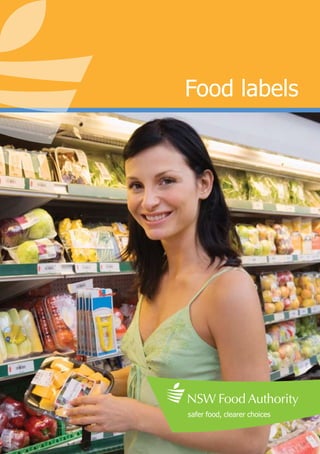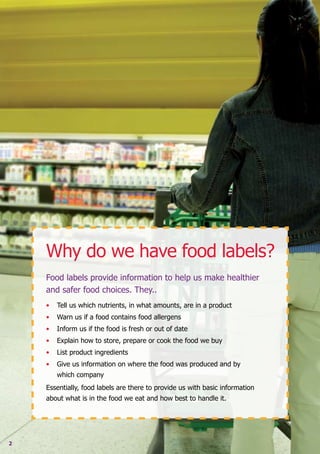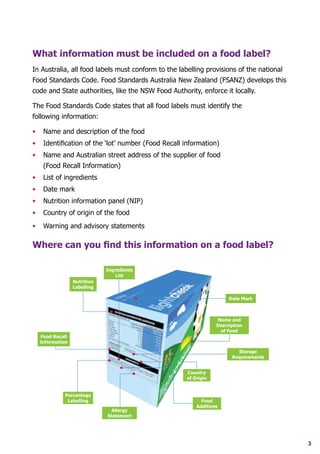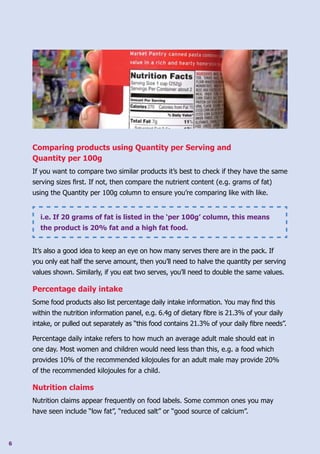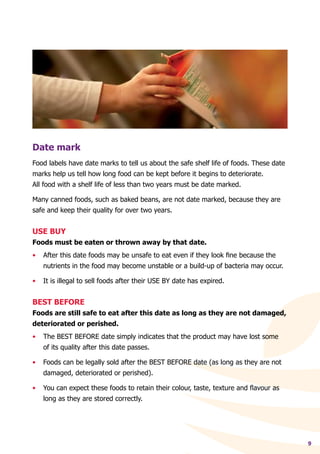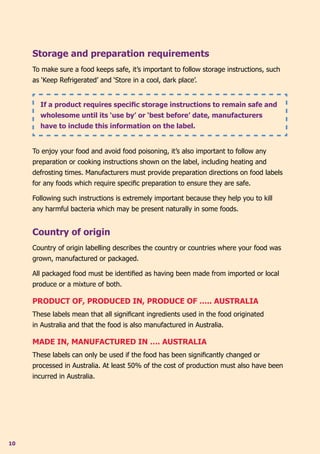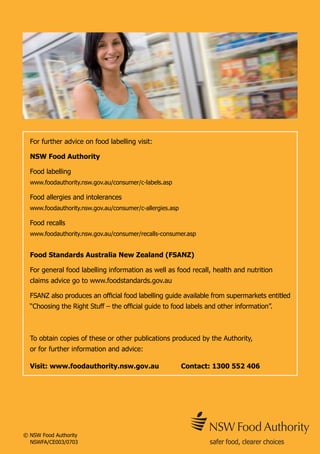Food labels provide consumers with important information about the nutritional content, ingredients, and proper handling of food products. They must include the name of the food, list of ingredients, nutrition information, date marking, and production details. This allows consumers to make informed choices about the foods they eat based on their dietary needs and preferences. Food labels aim to ensure food safety and provide transparency about what consumers are purchasing.
